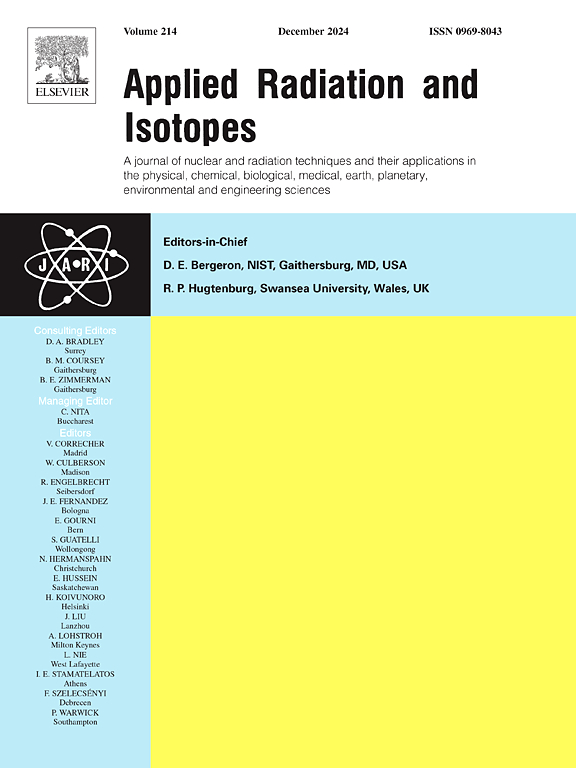Flexible Polyurethane - Tungsten oxide based composite for γ radiation shielding
IF 1.6
3区 工程技术
Q3 CHEMISTRY, INORGANIC & NUCLEAR
引用次数: 0
Abstract
The present work aims to develop and study a tungsten oxide containing polymer composite as an alternative for gamma radiation shielding. The seven polymer samples with different weight percentages (0 wt%, 5 wt%, 10 wt%, 20 wt%, 30 wt%, 40 wt%, and 50 wt%) of tungsten oxide (WO3) were fabricated using a solvent casting technique, and their radiation shielding properties were assessed experimentally. The radiation shielding properties such as linear and mass attenuation coefficients, half value layer, tenth value layer, mean free path, radiation protection efficiency, effective atomic number, and effective electron density were evaluated for the gamma-ray energy ranges between 81 and 1408 keV using gamma-ray spectroscopy with an HPGe detector. Geant4 simulations were also performed to corroborate the consistency of the experimental results. Furthermore, a comparative analysis was conducted between the experimental findings simulated predictions, and theoretical data obtained from Phy-X/PSD online software. Among all composite samples, the sample with the highest wt% of WO3 shows the highest mass attenuation coefficient of about 2.947 cm2/g and linear attenuation coefficient of about 4.8 cm−1. Also, the comparison of MAC, LAC, and HVL results of the 50 wt% PU-WO3 sample with other polymer-based bismuth oxide composites at 81 keV gamma photons shows better gamma radiation shielding efficiency which makes it a promising material for gamma radiation shielding applications.
求助全文
约1分钟内获得全文
求助全文
来源期刊

Applied Radiation and Isotopes
工程技术-核科学技术
CiteScore
3.00
自引率
12.50%
发文量
406
审稿时长
13.5 months
期刊介绍:
Applied Radiation and Isotopes provides a high quality medium for the publication of substantial, original and scientific and technological papers on the development and peaceful application of nuclear, radiation and radionuclide techniques in chemistry, physics, biochemistry, biology, medicine, security, engineering and in the earth, planetary and environmental sciences, all including dosimetry. Nuclear techniques are defined in the broadest sense and both experimental and theoretical papers are welcome. They include the development and use of α- and β-particles, X-rays and γ-rays, neutrons and other nuclear particles and radiations from all sources, including radionuclides, synchrotron sources, cyclotrons and reactors and from the natural environment.
The journal aims to publish papers with significance to an international audience, containing substantial novelty and scientific impact. The Editors reserve the rights to reject, with or without external review, papers that do not meet these criteria.
Papers dealing with radiation processing, i.e., where radiation is used to bring about a biological, chemical or physical change in a material, should be directed to our sister journal Radiation Physics and Chemistry.
 求助内容:
求助内容: 应助结果提醒方式:
应助结果提醒方式:


